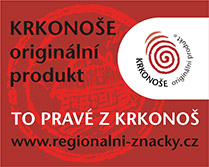Geology
The Krkonoše Mountains and Jizera Mountains combine to form the Krkonoše-Jizera crystalline complex, a geological unit of Proterozoic and Palaeozoic crystalline schist, primarily mica schist, phyllite and orthogneisses, dating back to between 600 million and 1 billion years ago. Other types of rocks include quartzite, crystalline limestone and, to a lesser extent, Tertiary basalt. All these are of great importance, despite being limited in quantity, for the formation of undulation and vegetation. On the southern edge of the mountain range, the complex mentioned above sinks beneath the Earth's surface and is covered with grades of sediment from lesser geological ages, during which the Krkonoše foothills' Permo-Carboniferous rocks were formed.
In the Carboniferous era, about 300 million years ago, a massive granite body penetrated beneath the older rocks. Called the Krkonoše-Jizera Pluton, it forms the bordering Silesian Ridge of Krkonoše from the foot of Sněžka Mountain as far as Harrachov, almost the entire Jizera mountain range and the Polish slopes of Krkonoše. Its existence relates to the contact metamorphism aureole that emerged, it exerting an overriding influence on the further development of the undulation of some parts of the mountains, e.g. the morphologically distinctive shapes of Sněžka as well as the ridge of Český hřbet. In particular, such contact with carbonate rocks brought about an area boasting some of the Krkonoše region's mineral deposits – Harrachov, Medvědín, Svatý Petr, Herlíkovice, Obří důl and others.









